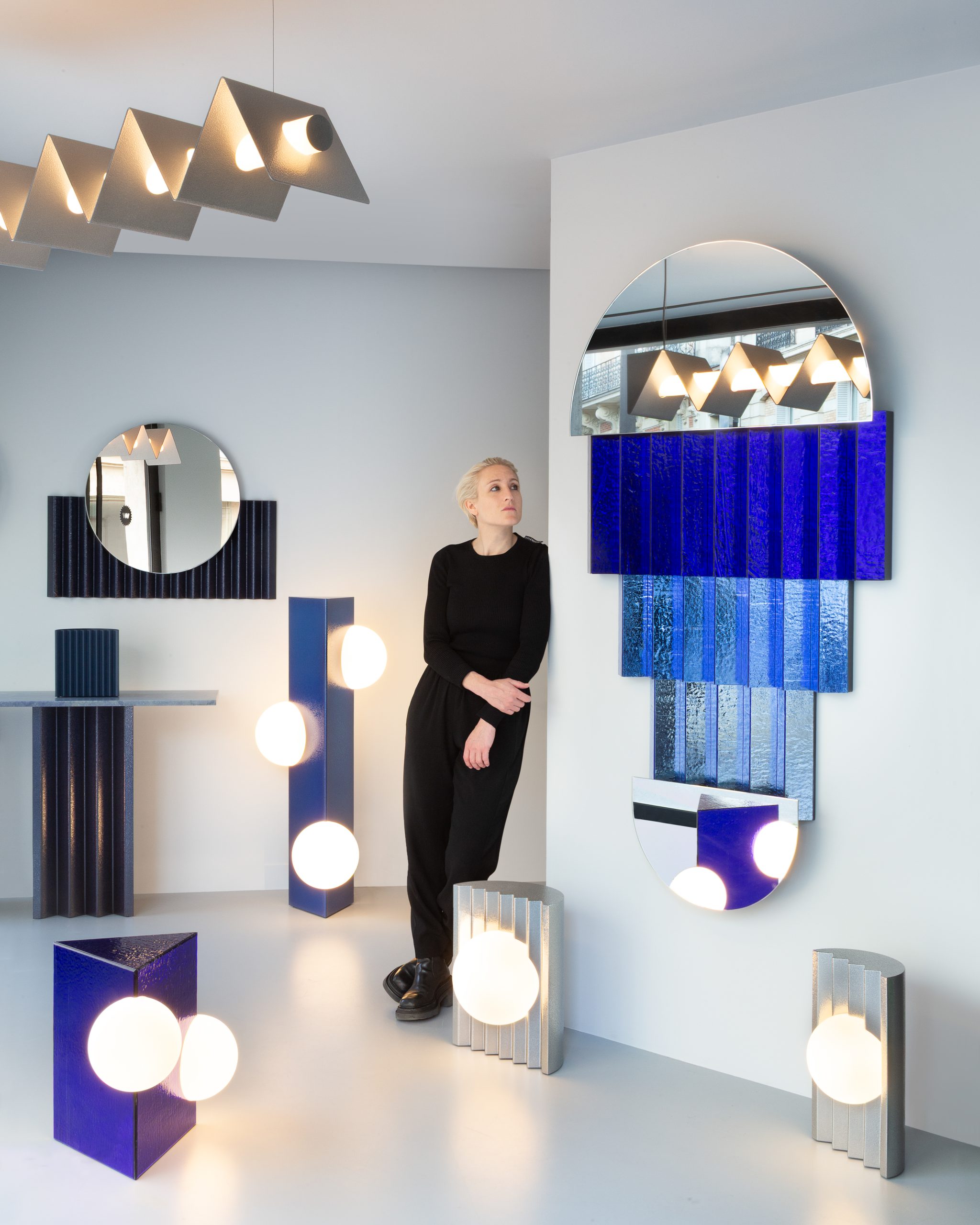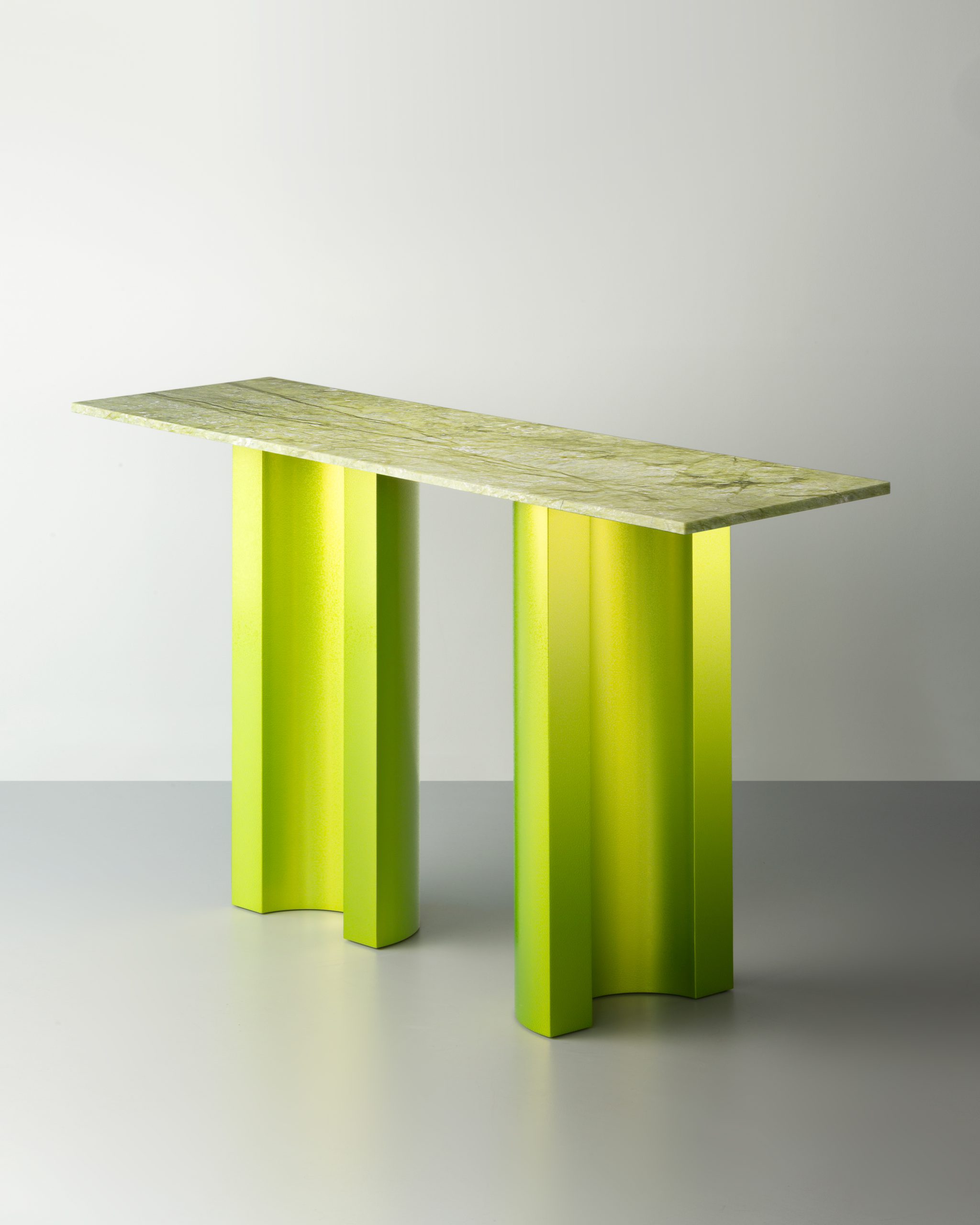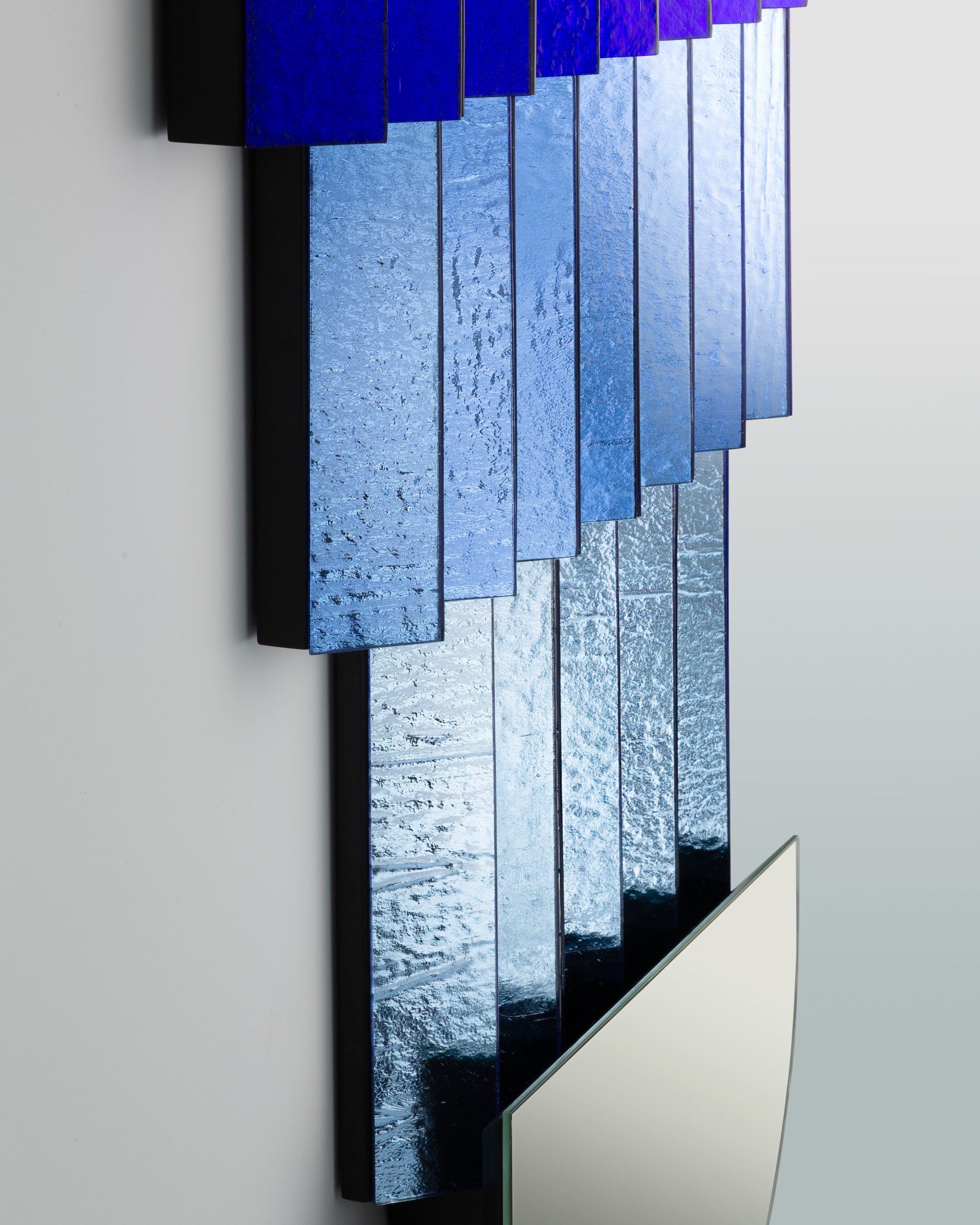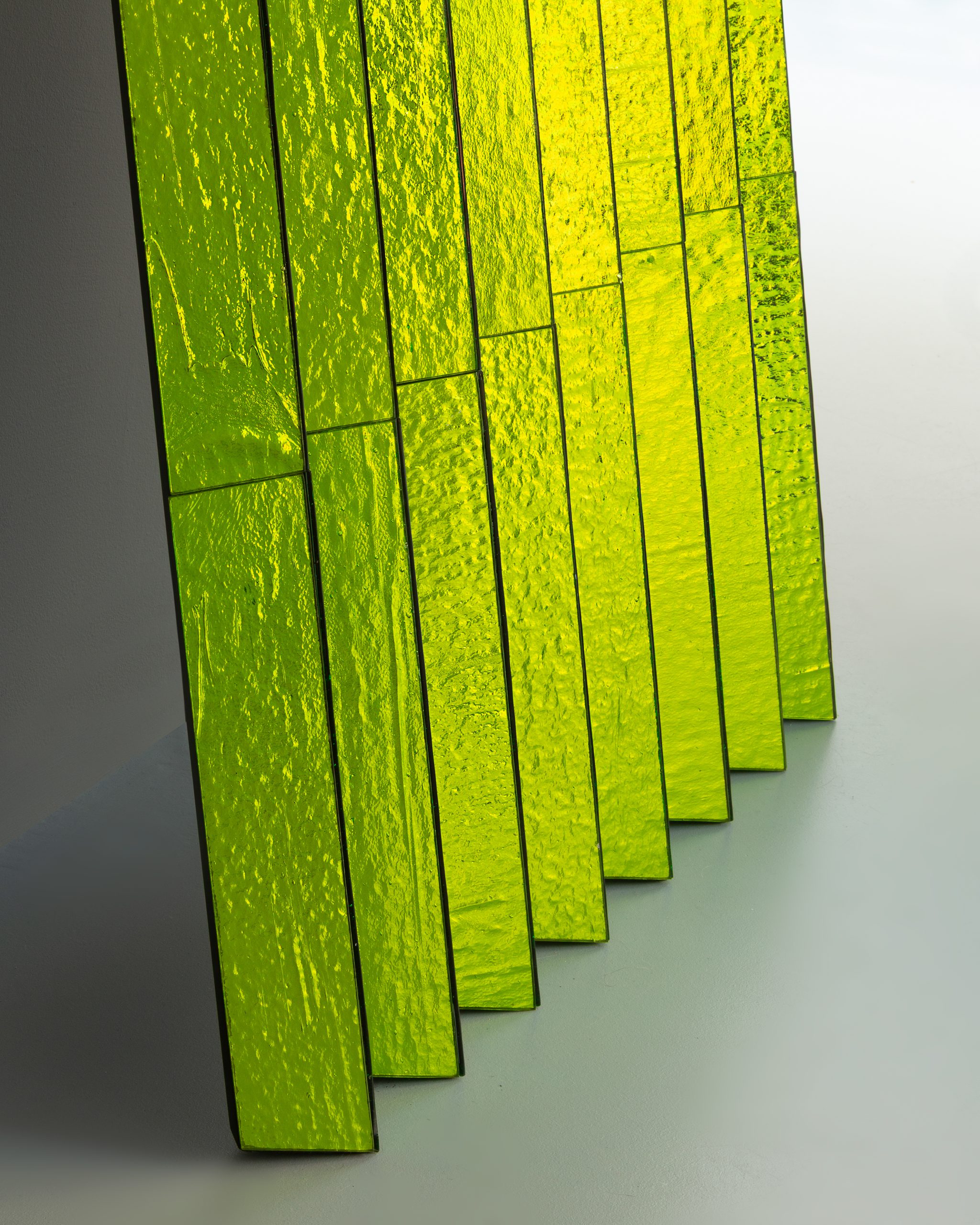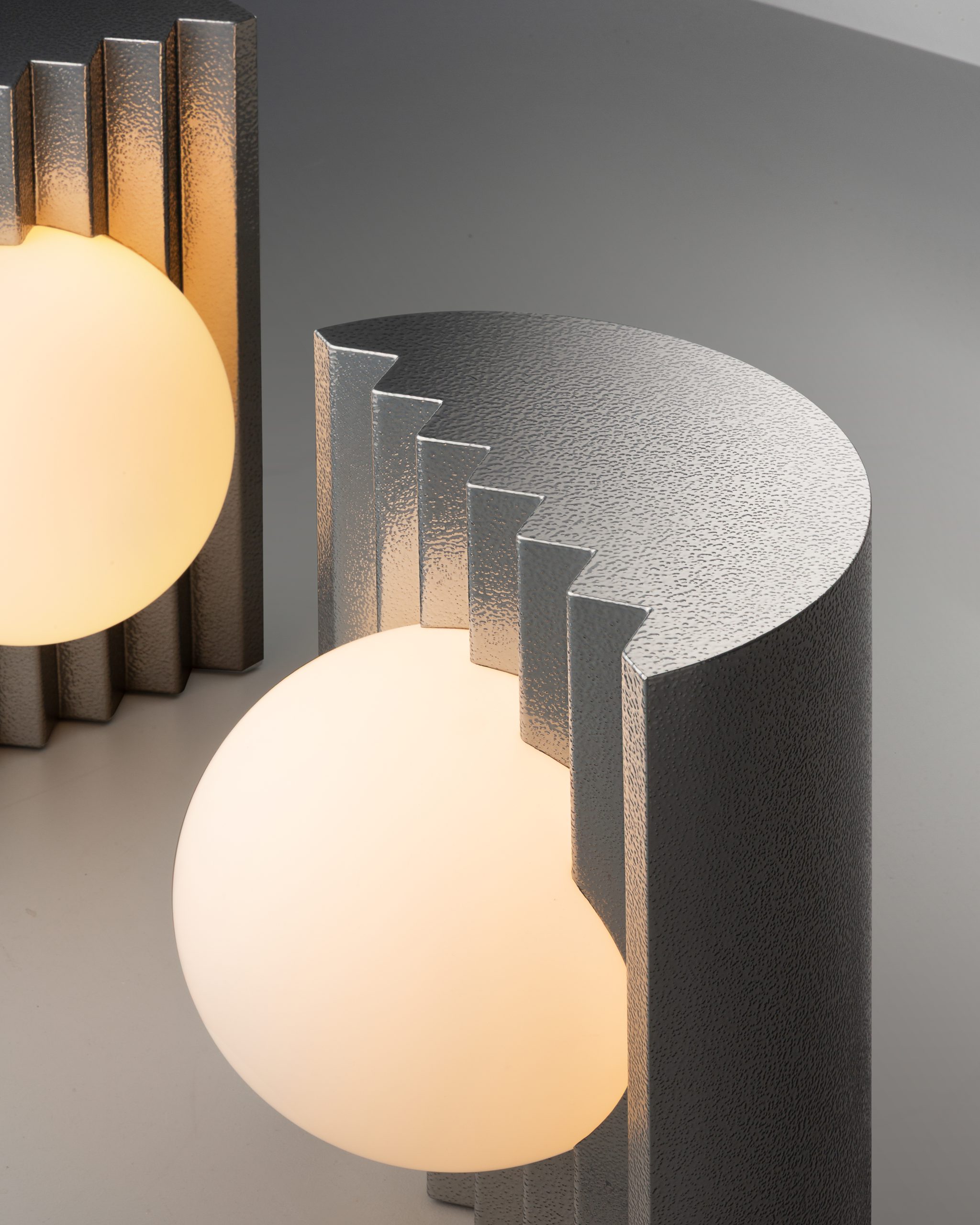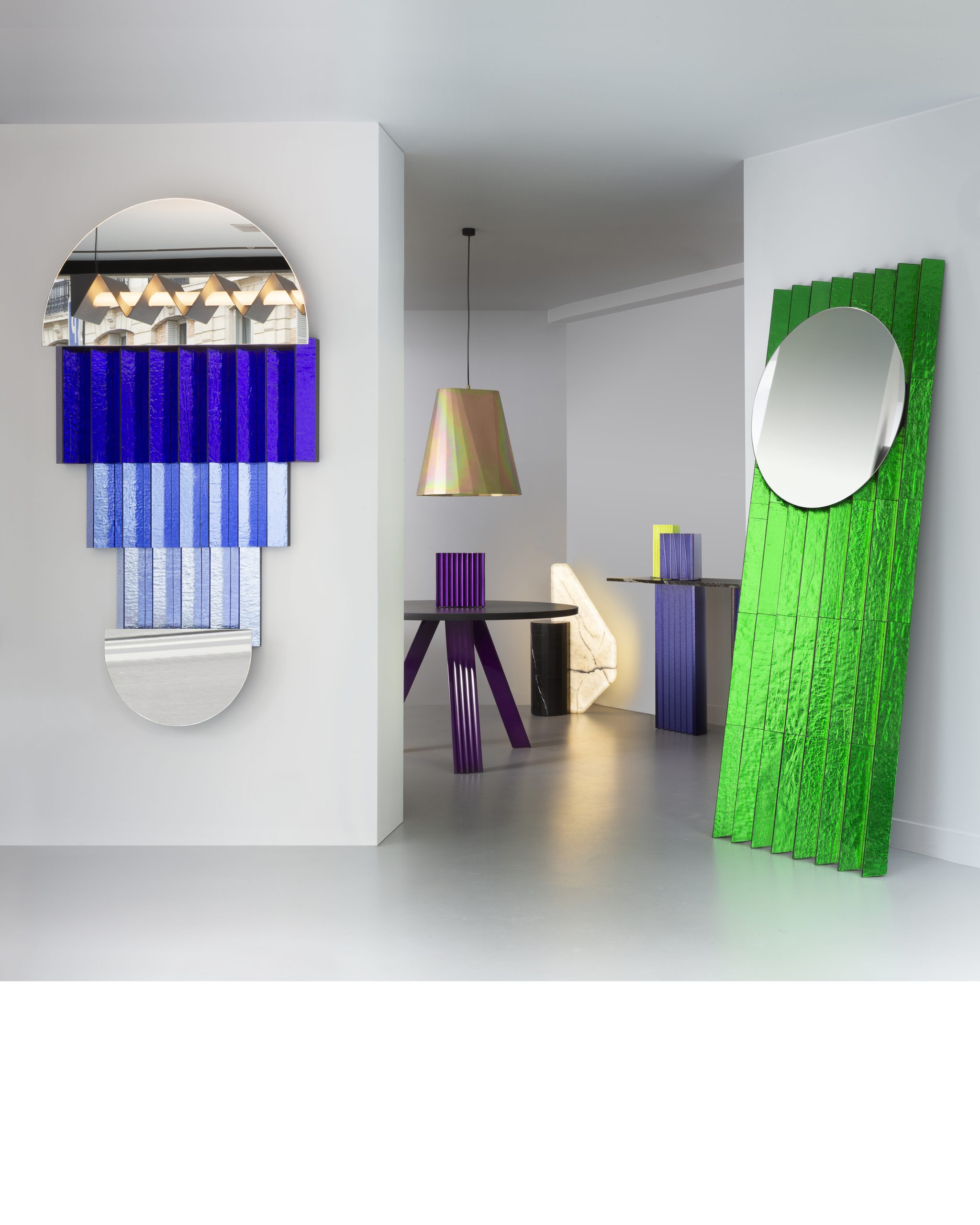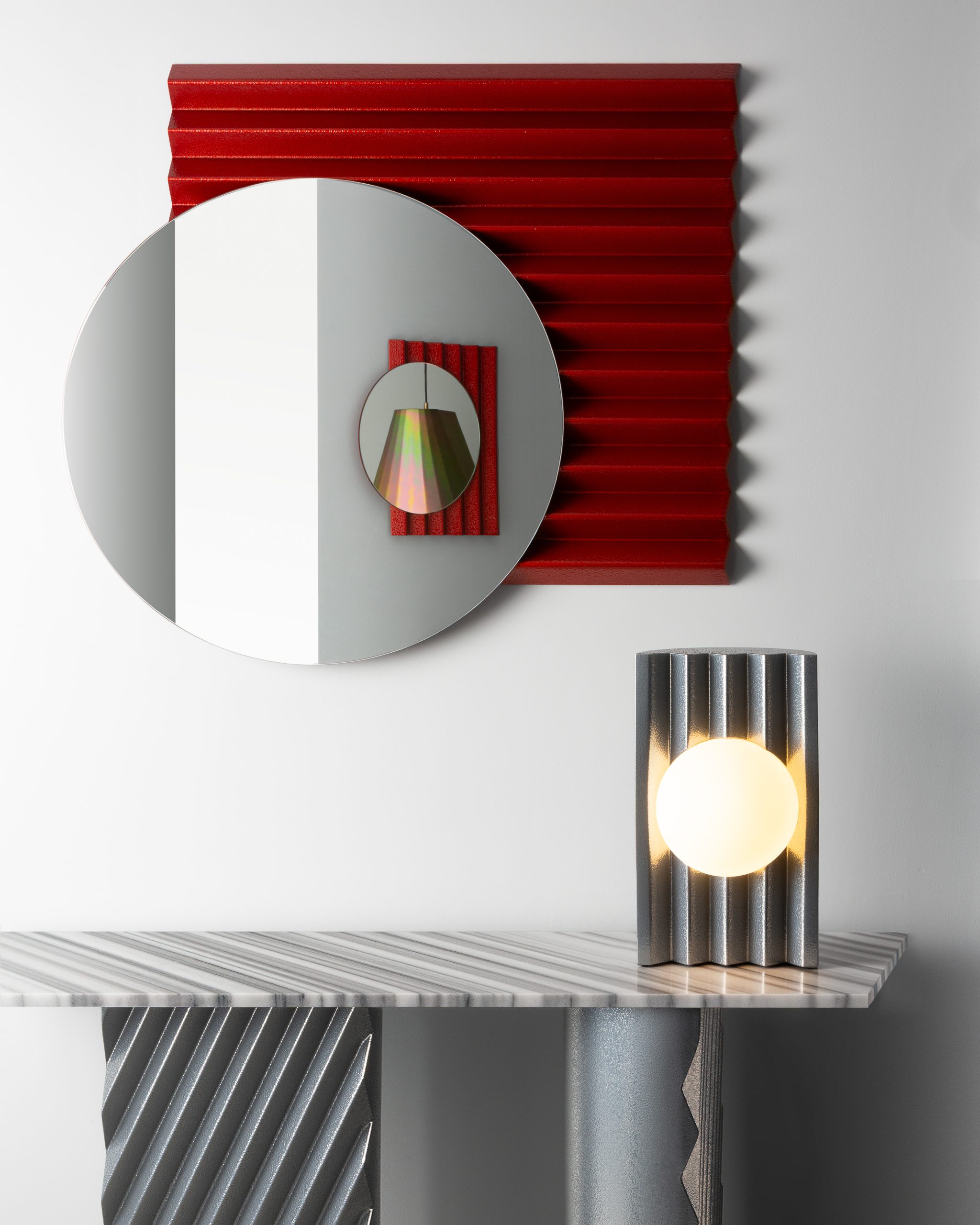In the heart of Paris’s 6th arrondissement, designer Victoria Wilmotte opens the doors of her new showroom with Colorscape, an exhibition that marks a moment of synthesis and revelation in her creative journey. Eighteen new works engage in dialogue with earlier creations—some never before shown to the public—shaping a chromatic and material landscape that extends beyond the boundaries of a traditional collection. Between natural marble, blown glass, and vibrant metal surfaces, Wilmotte constructs an intuitive visual language made of contrasts and resonances, where scenography becomes an integral part of the experience. Colorscape is not merely an exhibition, but an invitation to immerse oneself in a design universe where color, texture, and form transform into a sensorial narrative.
Interview with Victoria Wilmotte
RITAMORENA ZOTTI: “Colorscape” suggests a landscape of color—what does the title capture about the project that “collection” does not?
Colorscape suggests more an immersive environment, a landscape where the color is the main medium. A collection for me is more related to a series of object design with the same detail or intention. Sometimes a collection can be monochrome.
VICTORIA WILMOTTE: In marble, glass, and powder-coated metal, color behaves very differently—does color lead form, or does form dictate your chromatic decisions?
I will say that the form dictates the chromatic decision! It’s very true that color can completely change the intention of an object, it’s a very important decision, often influenced by the different materials that will compose an object. And when it’s mono-material, if the shape is already strong, I try to have something quieter.
RZ: How do you negotiate the tension between the inherent veining of natural marble, the translucency of blown glass, and the opacity of coated metal to create one visual language?
VW: I love confronting opposite materials and finishes, in terms of nobility especially. For example, confronting a very special powder coating finish with marble is my favorite. I think they complete each other. I also like that I have my own color repertoire, and I always manage to find these colors in different materials; suddenly, when they are confronted with each other, it’s beautiful. As I have this repertoire, sometimes when I look at everything together, I realize that the Murano Sfera lime green will be perfect on the Ming green marble console.
RZ: You conceived the exhibition design yourself: what spatial rhythms, sightlines, or proximities did you use so the pieces “speak” to one another?
VW: In the scenography I did three different small “sets” or scenes, defined by colors. There is the green set, the blue set, and the silver/red set—three small scenographies inside the space. In these sets I grouped the pieces by family of the same colors or colors that complement each other. The pieces naturally speak to each other even if they are not the same collection, they are the same family. In Colorscape there is a similar finish on all the metal pieces: a very specific textured shiny finish on bright colors, like a kind of ceramic, achieved through several coatings.
RZ: The show mixes 18 new works with older and never-before-seen pieces—what threads connect them, and what changed in your thinking when revisiting earlier creations?
VW: My work is a form of continuity, and I don’t think you can really see what piece was made before another. Nothing changes in the way of thinking—let’s say that it is more the encounter with a new finish or a technique which allows me to define the periods of creation.
RZ: Where do these works sit on the spectrum between utility and sculpture, and how do you design for tactility and ergonomics without diluting the sculptural gesture?
VW: I am always thinking in terms of shapes and techniques. That doesn’t mean I don’t think about function, but I’m not an industrial designer, I don’t design furniture for comfort. Let’s just say that a piece of design that is intelligent in its function is not necessarily ergonomic.
RZ: What experiments from your workshop—prototypes, small-batch trials—directly shaped this exhibition, and how do you decide when a piece is ready for larger-scale manufacturing?
VW: We can say that it is the set of these pieces that result from experiences and tests; sometimes a test begins on a large scale because I have already completely thought it out in drawing or in 3D. There are pieces which are unique and thought of in this way! When it comes to production by editors (like ClassiCon), there’s more back-and-forth on details, which is normal.
RZ: What questions does Colorscape open for you next—materials, scales, or techniques you’re eager to push further in the new Paris showroom?
VW: I would like to experiment with other materials; that’s the new thinking at the moment. But I would like to remain independent in manufacturing. It’s not easy!!
